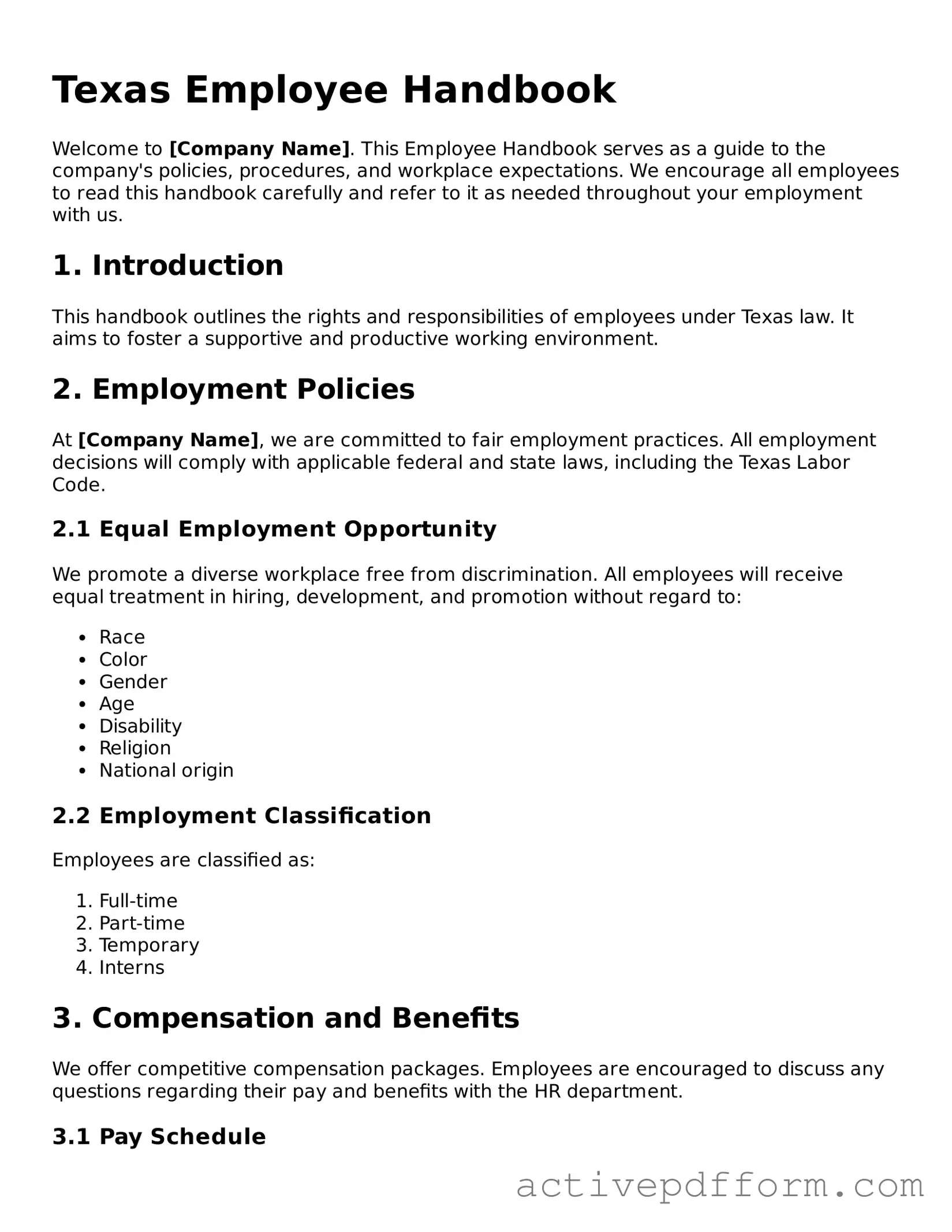What is the Texas Employee Handbook form?
The Texas Employee Handbook form is a document designed to outline the policies, procedures, and expectations for employees within a Texas-based organization. It serves as a guide for employees to understand their rights, responsibilities, and the company culture. This handbook is crucial for ensuring consistency and clarity in the workplace.
Why is it important to have an Employee Handbook?
An Employee Handbook is essential for several reasons. It helps establish clear communication between the employer and employees regarding workplace policies. Additionally, it can protect the company legally by providing documented evidence of policies and procedures. This can be especially important in cases of disputes or misunderstandings.
What should be included in the Texas Employee Handbook?
A comprehensive Texas Employee Handbook should include sections on company policies, employee rights, anti-discrimination policies, attendance and punctuality, workplace conduct, and disciplinary procedures. It may also cover benefits, leave policies, and safety guidelines. Each section should be clearly defined to ensure employees understand the expectations.
How often should the Employee Handbook be updated?
The Employee Handbook should be reviewed and updated regularly, ideally at least once a year. Changes in state or federal laws, company policies, or organizational structure may necessitate updates. Regular reviews ensure that the handbook remains relevant and compliant with current regulations.
Who is responsible for distributing the Employee Handbook?
The responsibility for distributing the Employee Handbook typically falls to the Human Resources department. It is important that all new employees receive a copy upon hiring, and existing employees should be informed of any updates. A signed acknowledgment of receipt may be requested to confirm that employees have read and understood the handbook.
What should employees do if they have questions about the handbook?
If employees have questions or concerns regarding the Employee Handbook, they should reach out to their supervisor or the Human Resources department. Open communication is encouraged, and addressing questions promptly can help clarify any misunderstandings and foster a positive work environment.
Can an Employee Handbook be used in legal disputes?
Yes, an Employee Handbook can be a valuable resource in legal disputes. It serves as a written record of the company's policies and procedures, which can help defend against claims of unfair treatment or discrimination. However, it is crucial that the handbook is well-drafted and regularly updated to ensure its effectiveness in legal situations.
Is it necessary to have an attorney review the Employee Handbook?
While it is not legally required to have an attorney review the Employee Handbook, it is highly advisable. An attorney with experience in employment law can ensure that the handbook complies with all applicable laws and regulations. This step can help prevent potential legal issues and protect the company’s interests.
What are the consequences of not having an Employee Handbook?
Not having an Employee Handbook can lead to confusion among employees regarding company policies and expectations. It may increase the risk of legal disputes, as there would be no formal documentation of policies. Additionally, a lack of clear guidelines can result in inconsistent enforcement of rules, which can harm workplace morale and productivity.
